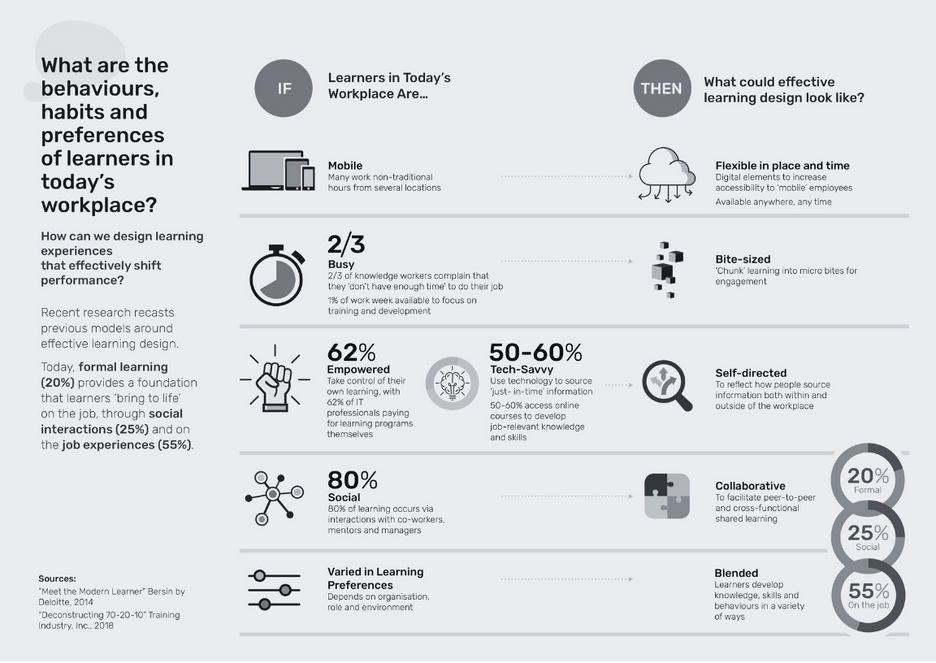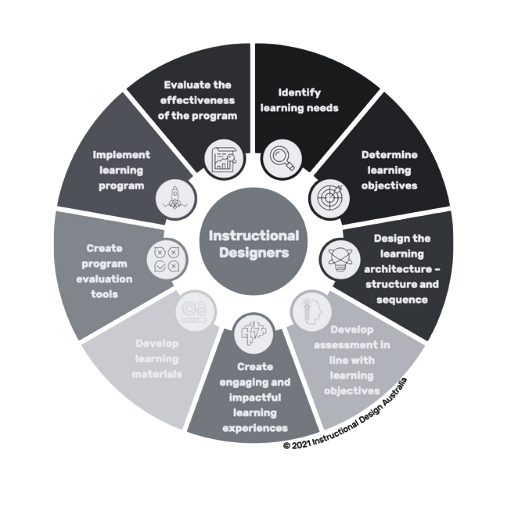Hey there! Have you ever wondered what all the fuss is about Instructional Design? Well, let’s break it down in plain English. Instructional Design is basically the art of crafting learning experiences that actually stick. It meets the needs of learners and builds on their lifelong learning. It’s like being a wizard of education, using your knowledge of how people learn to create the perfect recipe for teaching success.
Instructional Design can be applied to anything that involves humans building each other, focusing on performance and achievement together. The Instructional Designer is someone who has developed the ability to intuitively apply their understanding of how learners learn and, therefore, identify the most effective instructional methods. This includes finding the most efficient, effective, and motivating solution, which saves time, resources and other costs. The Instructional Designer considers the instructional problem, the task, the learning needs and the learning environment. By clearly defining the learning objectives, the Instructional Designer can select content and choose strategies to meet the learning goals. These decisions are based on both knowledge of proven learning strategies and practical experience.

Research has shown that particular ways of delivering instructions are more effective than others. Different kinds of learning goals require different approaches to instruction. The Instructional Designer can determine the best instructional conditions or methods to deliver learning outcomes. The Instructional designer develops instructional strategies that are tailored to the learning objectives and the needs of the learners.
Instructional Design: What’s the Big Idea?
Think about it like this: whenever you need to teach something, whether it’s training new employees or helping students ace their exams, Instructional Design is your secret weapon. It’s all about understanding the learners and what they need to achieve, then tailoring the learning experience to fit like a glove.
The instructional designer uses a variety of interactive media to improve learning and address learning objectives. Traditional face-to-face teaching methods are enhanced by, or even replaced with innovative learning methods. The instructional designer is the expert in finding the right technology to support good andragogy (Like pedagogy, but for adults).
ADDIE Instructional Design Model
Hungry Minds instructional designers use Instructional Design Australia (IDA) methods that draw on the ADDIE model of instructional design when delivering its learning design services to clients across Australia. Watch the video to learn more about how Hungry Minds instructional designers apply the ADDIE model.
The Information Age is making new demands on us all. So education must find ways to face these challenges. We can no longer see learners as empty vessels that can be filled with information. The information now resides out there, distributed across a vast network and shared between all people. The challenge now is to help people to use this information safely, wisely and productively as they adapt to a rapidly changing world. We need to prepare “students to learn, work and live successfully in a knowledge-based, global society” (Newhouse, 2002). The Instructional Designer is there to facilitate learning in this new epoch, The Knowledge Age.

Infographic: What are the behaviours, habits and preferences of learners in today’s workplace
And guess what? Instructional design is not just for classrooms anymore. It can spruce up anything from online courses to corporate training sessions. The goal is always the same: make learning effective, efficient, and maybe even a little fun.
But here’s the kicker: it’s not just guesswork. Instructional designers are like detectives, gathering clues from research and real-world experience to figure out the best way to get the message across. They know that one size doesn’t fit all when it comes to learning, so they’re experts at picking the perfect tools and tricks for the job.
And why does it matter? Well, in today’s fast-paced world, we’re swimming in a sea of information. Instructional Design helps us navigate that sea, turning raw data into actionable knowledge that can change lives.
Instructional Design, Educational Design or Learning Design
So, whether you call it instructional design, educational design, or learning design, one thing’s for sure: it’s the key to unlocking a world of learning possibilities. Ready to dive in? Let’s go!
What Do Instructional Designers Do?
Instructional Designers connect the dots for adults. They draw on adult learning principles to design and develop effective learning programs. This encompasses a wide range of tasks and will vary depending on the learning solution. We’ve summarised the key job tasks and responsibilities of Learning Designers.

At Hungry Minds, our Instructional Designers go above and beyond to ensure effective learning experiences by: identifying needs, determining goals, designing curriculum, developing content, creating materials, implementing strategies, and evaluating outcomes.
FAQs - Frequently Asked Questions
Instructional design is the process of applying our understanding of how people learn to drive our decisions of instructional strategies and sequences to meet learning needs. It’s the method of drawing on adult learning theory and instructional design models and principles, to create learning programs that most effectively help learners achieve the learning outcomes.
The aim of instructional design is to make learning effective, engaging, efficient and cost-effective.
The three major components of instructional design are:
Learning objectives
Instructional activities
Assessment
Curriculum design is ‘what’ learners will learn, in other words, curriculum design refers to the total content: the knowledge, skills, learning outcomes in what is planned for the learning process.
While instructional design is ‘how’ students will learn it. refers to the learning methods and experiences. Instructional design is a focus on understanding the learner, the end goal of the learning, and building exactly how the learner gets from one to the other.
Exceptional Instructional Designers are learner-focused, creative and have excellent communication skills. They keep projects on track, meet deadlines and maintain high-quality standards. Instructional Designers are eager learners and constantly explore innovative and evidence-based strategies to improve their practice.




